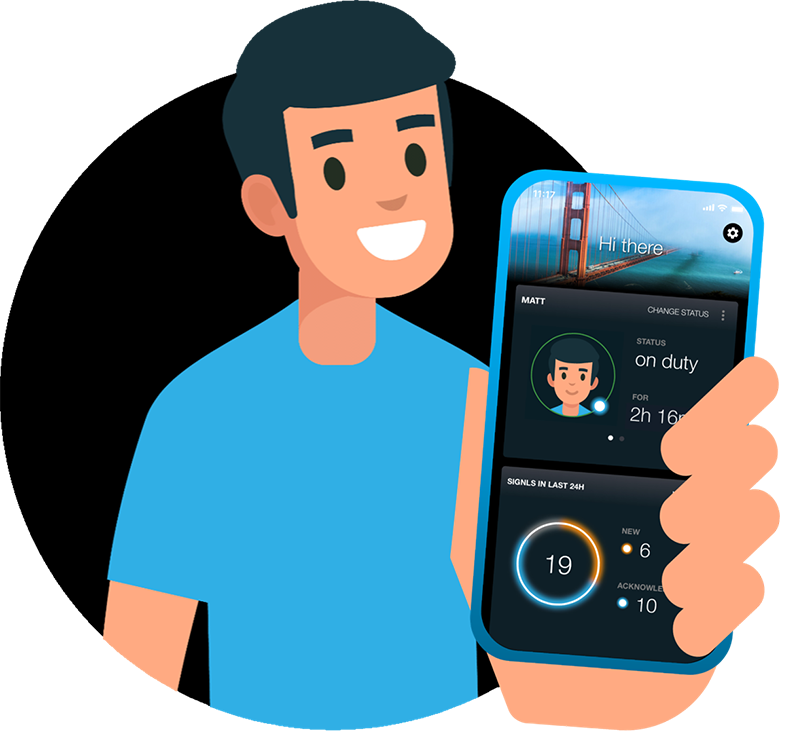SIGNL4 is a cloud-based mobile alerting and incident response service. Third-party systems like monitoring tools, control systems or IoT sensors detect abnormalities and transmit events to SIGNL4 over the Internet. What if your systems cannot transmit critical events anymore? That might happen when the Internet is down or when the tool itself has a problem. In this case, SIGNL4 would miss critical events and could not turn them into alert notifications to your IT admins, technicians and experts.
SIGNL4 offers several options to detect whether or not your system can still transmit events and to alert users accordingly in case of a problem. In other words, SIGNL4 alerts you in case your monitoring tool is disconnected or down.
1. Website Monitoring
SIGNL4 supports simple website monitoring. You can configure a URL to be checked in certain intervals. If the check failed, for example if the website is not available or if an HTTP error code is returned, SIGNL4 will raise an alert and notify the responsible people.
You can use this website monitoring to check the URL of your monitoring tool. If you have an on-premise monitoring tool you need to open a port and let SIGNL4 check the tool’s URL accordingly. A failed check, e.g. an unreachable URL, might indicate a problem with the Internet connection.
2. Heartbeat Monitor
In your SIGNL4 web poral under Teams -> Apps -> Heartbeats you can configure the heartbeat monitor. This one expects incoming HTTP requests (GET or POST) in regular intervals and if such a request is missing SIGNL4 will raise an alert. On your end you can configure your monitoring tool, another system or a regular cron job to send HTTP requests in certain intervals, e.g. every two hours. If SIGNL4 receives the request all is fine. If a request is missing for two hours or more SIGNL4 will trigger an alert.
This is a simple method to check your internet connection and to send an alert if the connection is not available anymore.
In the Heartbeat configuration in SIGNL4 you can configure multiple checks per instance. To do so you enter multiple keywords separated by a semicolon, e.g. “sensor1;sensor2”. The content / parameters of your HTTP request must then contain these keywords, e.g.:
https:// connect.signl4.com/apps/19f90c13-b77f-4c5e-8a19-661d4d42ee2b_1730abbc-52e8-44ce-aa98-e5c289033241?param=sensor1
and
https:// connect.signl4.com/apps/19f90c13-b77f-4c5e-8a19-661d4d42ee2b_1730abbc-52e8-44ce-aa98-e5c289033241?param=sensor2
The last part (e.g. ?param=sensor1) is the dynamic part. The first part is your SIGNL4 Heartbeat URL that you can find on the Heartbeat configuration page. You can find additional information and help there as well.
3. Round-Trip Check
Besides the two options above there are other more sophisticated ways to check if your backend system is still alive. For example you can use a round-trip check by combining the website monitoring and the heartbeat check. To do so you use the website monitoring to send an HTTP GET request to your system. This triggers whatever check is necessary on your side and as a result it sends back a request to SIGNL4’s heartbeat URL.
The above methods allow you to receive alerts even if your monitoring tool can’t send out anything anymore. Don’t hesitate to contact us if you have any questions about the best options in your specific scenario.
If you’d like to give SIGNL4 a test-run, you can do so here for 30days and for free.


